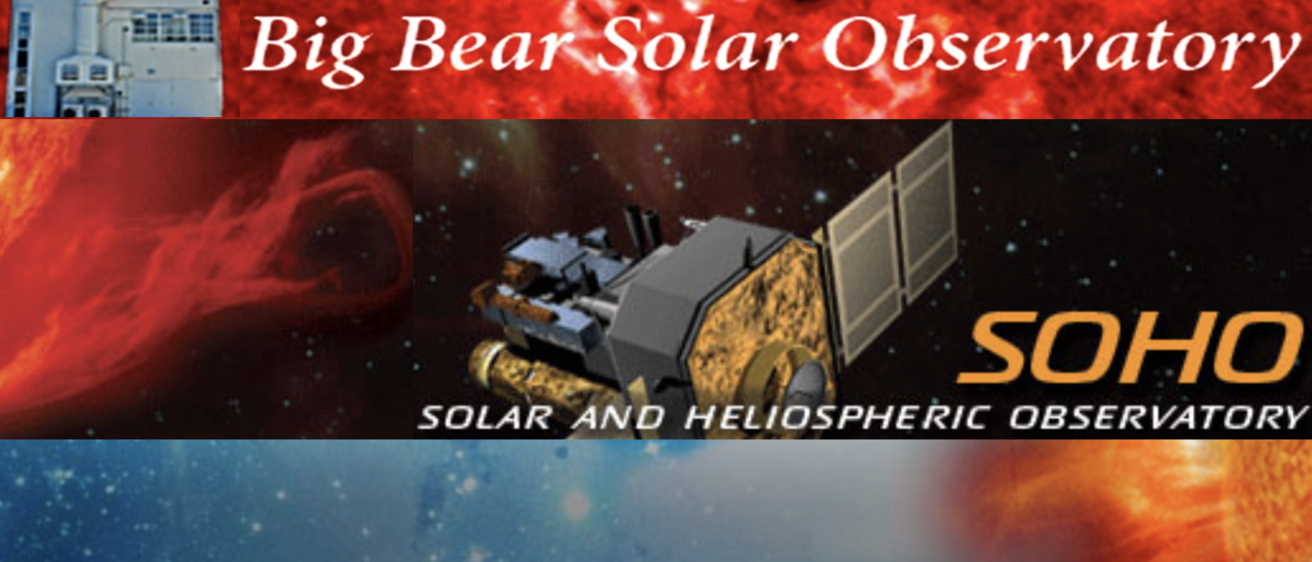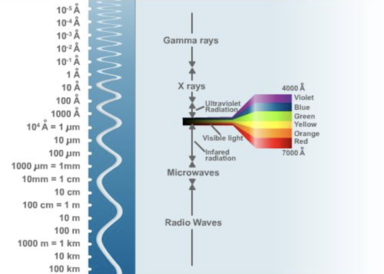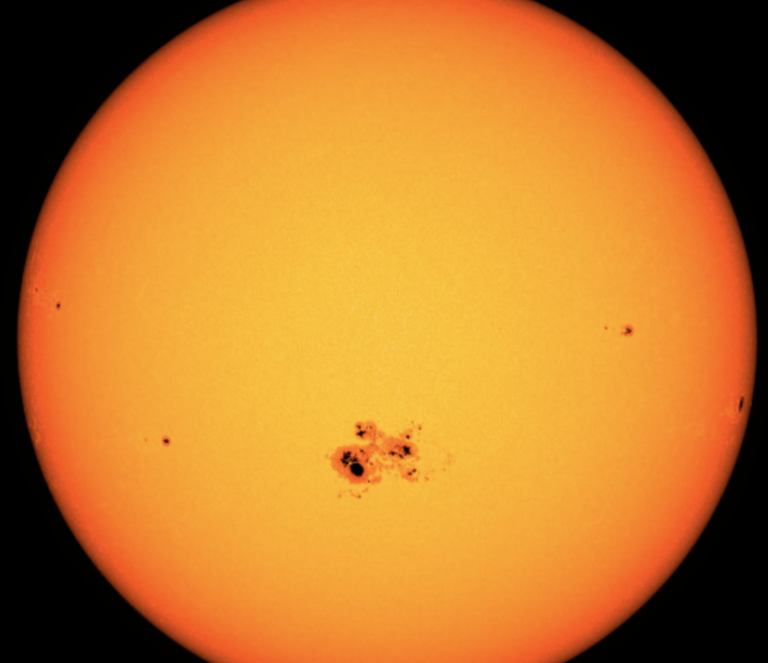
Breadcrumb
- Home
- Labs
- Observational Labs
- Solar Observations
Solar Observations
Resources: Worksheet, Big Bear Solar Observatory (BBSO), Solar and Heliospheric Observatory (SoHO), Solar Dynamics Observatory (SDO)
The Sun is our prototype of a "Main Sequence" star, and it has provided us with much of what we know about stars in general. In addition, the Sun is the dominant object in the sky, and many of its characteristics are among the most interesting phenomena in Astronomy. This lab will provide students with a chance to make ``real time’’ analysis of the Sun though the use of online tools that will allow students to see images of the Sun collected by Solar telescopes. The Sun is an interesting object to study in a telescope, because it changes from month to month and day-to-day. Sometimes it even changes from one minute to the next. Observations in 2025 will be made at a time of "Solar maximum", when surface features such as sunspots are common. Try and check out the Sun again in about 5 years (by using the same online tools or by visiting a local observatory), when it has swung around to the minimum state.
Solar Telescopes
Some Solar telescopes show the Sun in white light, meaning that all the light from the Sun is taken, without filtering with respect to color. Some Solar telescopes filter for a certain color, or wavelength, such as ultraviolet or Hydrogen Alpha. The telescopes used in this lab use a Hydrogen Alpha (or H-alpha) filter. This transmits only light in a narrow range of wavelengths around the Balmer Alpha line of the hydrogen atom. This line is the bright red emission line that you see in hydrogen spectra. By applying Kirchoff’s Laws, the Hydrogen Alpha filter allows viewing of hydrogen gas clouds glowing against the dark background of space, or in absorption against the solar disk. Some Solar telescopes show the Sun’s magnetic field features, and some show the Sun’s outer layer or corona. Observations will be made with Solar data from research observatories available online via the internet, as well as hands-on using Coronado solar telescopes. Students will view real time, or near-real time images of the Sun available from the following sources:
Big Bear Solar Observatory (BBSO) - We will use images from the Big Bear Solar Observatory, a Solar telescope operated by a university, the New Jersey Institute of Technology. Hover over the “Data” menu at the top of the page and then click “Latest Images”. The solar telescope has near-real time images of the Sun in H-alpha light (‘full disk H-alpha image’ and 'contrast enhanced full disk H-alpha image'). You can also look at images of the Sun in white light (‘GONG+ intensity image’) and images of the magnetic field patterns on the Sun (‘GONG+ magnetogram’).
Solar and Heliospheric Observatory (SoHO) - We will also use the SOHO spacecraft, which is approximately a million kilometers out in space in the direction of the Sun. For the SOHO site, click on the link for “The Sun Now” toward the right of the page. You can choose to look at images of the Sun in different wavelengths of ultraviolet light (‘EIT 171’, ‘EIT 195’, ‘EIT 284’, ‘EIT 304’) and images of the Sun’s corona with a coronagraph that blocks out the disk of the Sun (‘LASCO C2’, ‘LASCO C3’). (You can also look at images of the magnetic field patterns on the Sun on the SOHO website (‘SDO/HMI Magnetogram’), but these images are taken from the Solar Dynamics Observatory website.) North is up and east is left in these images. For the ultraviolet light images, note that the numbers in the names of the different wavelength images are the exact wavelengths the images are taken at in units of Angstroms, and that the images are in false color; our eyes do not see ultraviolet light, so a visible light color is assigned to the image.
Solar Dynamics Observatory (SDO) - We will look at images from the SDO spacecraft which continuously makes images of the Sun at a number of wavelengths in ultraviolet light (the 9+ ‘AIA’ images) as well as images of the magnetic field patterns on the Sun (‘HMI Magnetogram’). For the SDO, you can page through the images under “The Sun now” on the front webpage, or to see all the images on one screen, click the “Data” menu at the top of the page and then click “The Sun Now”. North is up and east is left in these images.
The Electromagnetic Spectrum

The images you will view today from different solar observatories are taken at different wavelengths than just those our eyes use to see. Some images are ordinary white-light images (the BBSO can capture these type of images), but others are taken at a very specific wavelength of visible light, the H-alpha emission line of 6563 Angstroms (656.3 nanometers; another type of image the BBSO captures) emitted by Hydrogen atoms. Other images are taken in ultraviolet wavelengths outside the visible range of light that our eyes can see (SOHO and the SDO capture images in ultraviolet wavelengths).
